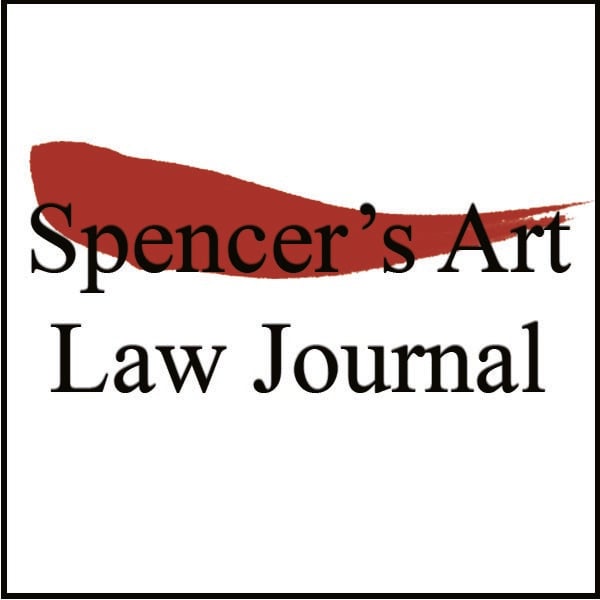Market
Lien Searches May Not Always Tell You Much—But Do Them Anyway
A buyer needs to perform their due diligence when purchasing art.

A buyer needs to perform their due diligence when purchasing art.

Aaron R. Cahn


This essay addresses the procedure of lien searches, which buyers doing their due diligence need to utilize in order to fairly assure themselves that they obtain title, free of liens. We will see that there are inherent limits to the protection lien searches afford.
• • •
When an owner sells a work of art, the buyer will necessarily have concerns that go beyond such standard items as price, authenticity, or similar terms of the sale. A buyer must also be concerned whether or not a sale will convey clear title to the work.
The first task should be to document, insofar as is possible, that the seller is in fact the owner of the work, or at least has the legal right to sell or consign it. But confirming the bona fides of the seller is only the first step; the buyer also needs to be on the lookout for any liens that may exist on the work that would not be extinguished by a sale to him as a good-faith buyer for value. For example, when a work is sold by a dealer, a sale to a good-faith buyer for value will be free and clear of any liens that the dealer has granted that would otherwise cloud title to the work, but any liens created by a prior owner existing on the work at the time it was consigned or sold to the dealer would not be extinguished in the course of a sale through the dealer (and if a work is not purchased through a dealer, the sale would not be free and clear of liens granted by the seller). Thus, if the parties do not take pains to ensure that there are no liens on the work, or that any liens that do exist are paid off with the proceeds of sale, a buyer could run the risk of suddenly being faced with a demand by a lienholder to either pay off the lien (despite having previously paid fair value to the seller) or deliver the work to the lienholder.
The question then becomes: how to determine whether liens exist on the work?
Step one is to ask the seller. But if you ask and then decide that you are not satisfied with the answer, you may want to search further. The best, but by no means foolproof, way to do that is to conduct a Uniform Commercial Code lien search. Here are some basics.
Where do you search?
Every state maintains a database of filings made pursuant to the Uniform Commercial Code (adopted in all 50 states); these filings are required to “perfect” a lien; that is, extend the effectiveness of the lien to parties other than those whose contract created the lien. In order to be effective against third parties, the filings must be made in the state where the person granting the lien is “located.” An individual is deemed to be located in the state of the individual’s primary residence (although if the individual has more than one residence, and the determination becomes a complicated factual inquiry, prudence would dictate searching the most likely candidates). For a corporation and other “registered organizations,” such as an LLC, the search should be performed in the state where the company was organized. The search is quick (it can be done electronically) and relatively inexpensive. Most state’s databases allow a search to reference either the name of the lien grantor or the holder of the lien.
Whom do you search?
The current owner should always be searched. If the work has been owned by the seller less than five years (the duration of a Commercial Code lien), prior owners should be searched as well.
What do you search for?
A financing statement (form UCC-1) filed against the party to be searched, which lists as collateral either specific works of art, categories which include the word “art” or any synonyms, or generic categories such as “all assets.”
However, there are many reasons why a lien search may fail to disclose the existence of a lien. Examples:
Some of the examples given above may be unlikely, but the lesson to be drawn is that the lien search process is necessarily imperfect, subject to human error, incomplete information, or misinformation. Ultimately, how much time, effort, and money to expend on such an inquiry will necessarily be a function of the buyer’s business judgment. However, unless the buyer is completely confident in the information that accompanies the consignment or sale of the work (and perhaps even then), at least some level of inquiry should be undertaken.
New York, NY
October 2013
Aaron R. Cahn
Carter Ledyard & Milburn LLP
Editor’s Note
This is Volume 4, Issue No. 2 of Spencer’s Art Law Journal. This issue contains three essays, which will become available by posting on artnet.com, starting in November 2013.
This first essay (A Seller Should Have Reasonable Grounds for His Unqualified Authenticity Opinion…) discusses whether a seller’s opinion based on “mixed” (positive and negative) facts needs to be qualified as “probably,” and whether the negative facts must be disclosed.
The second essay (Consigning Art Under New York’s Amended Arts and Cultural Affairs Law…) examines the new law on art consignment for artists and their estates, and, as well, raises issues for owners and collectors consigning art for sale.
The third essay (Lien Searches May Not Always Tell You Much…) addresses the use of lien searches to discover claims against art and the inherent limitations of these searches.
Three times a year, issues of this journal address legal issues of practical significance for institutions, collectors, scholars, dealers, and the general art-minded public.
— RDS